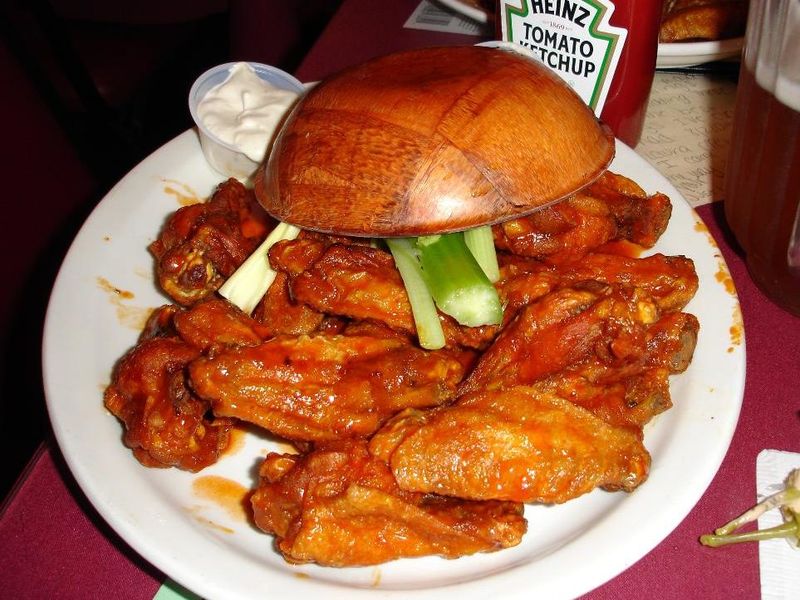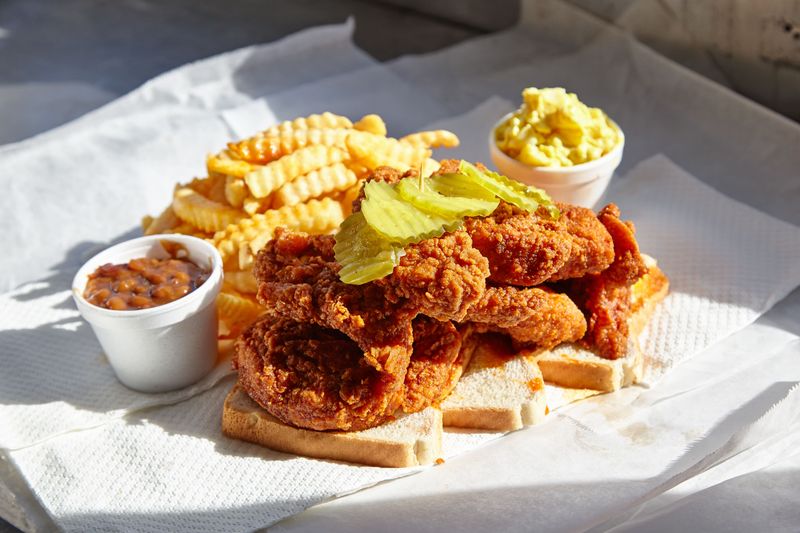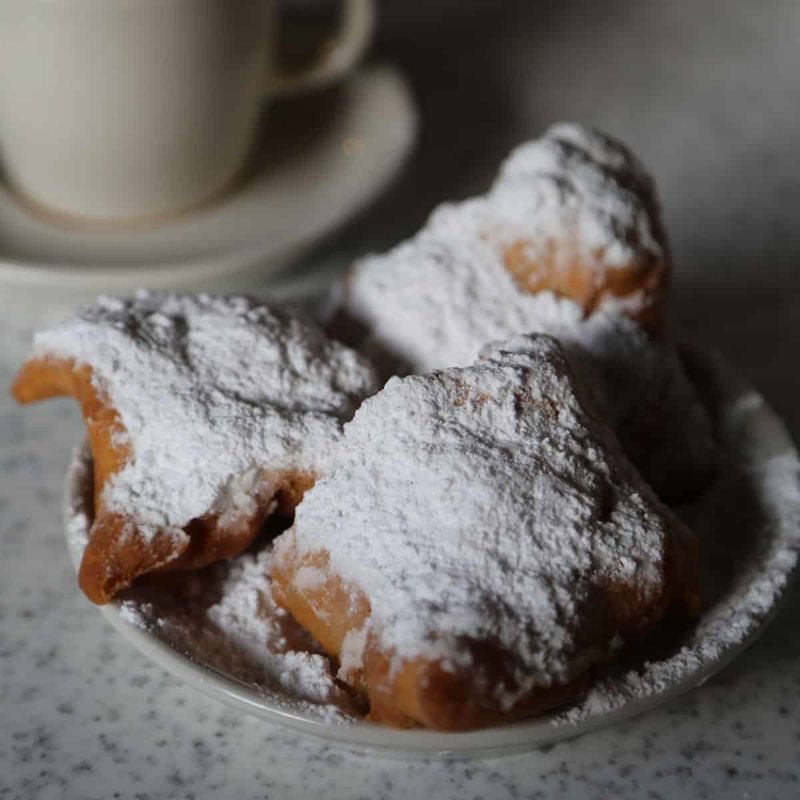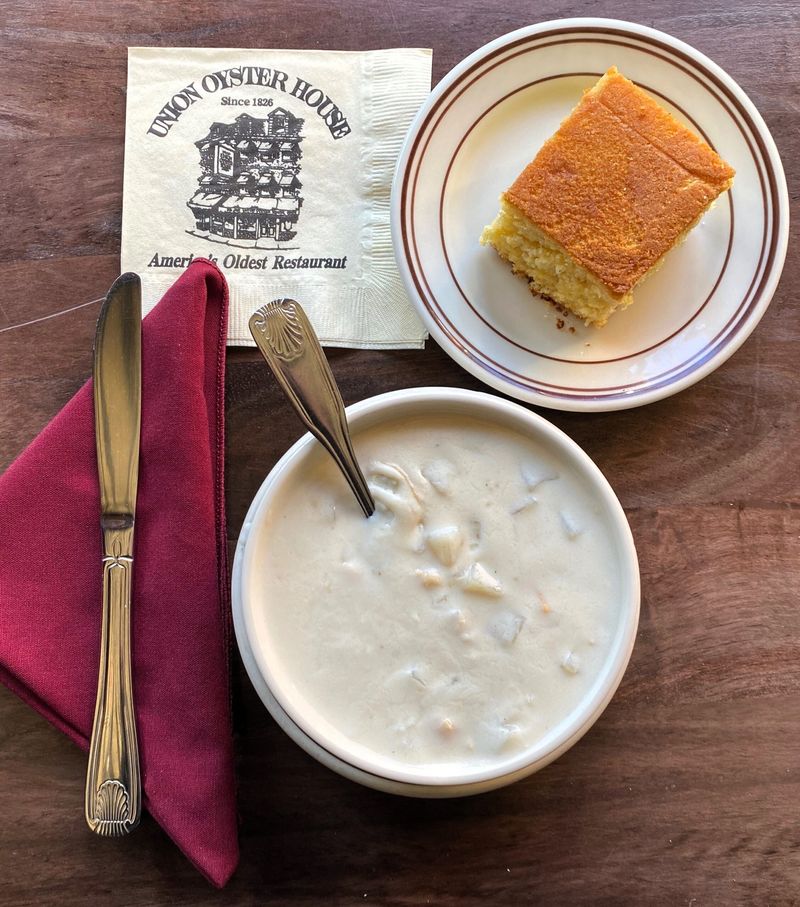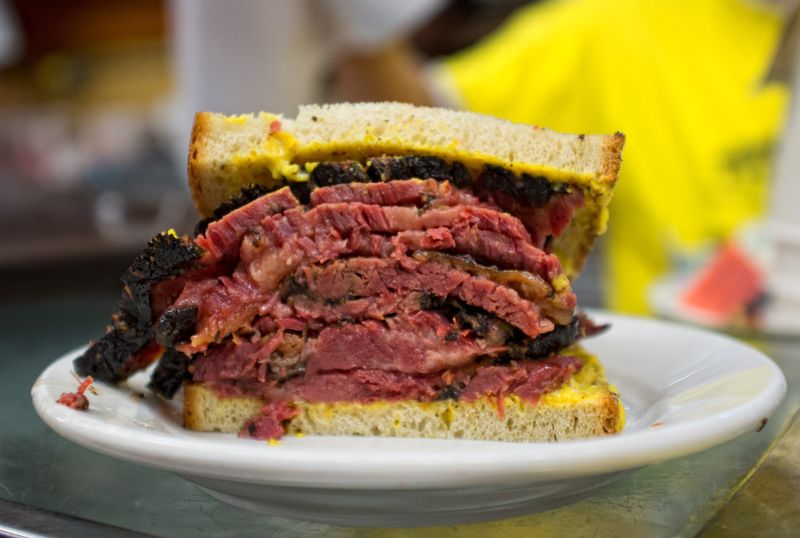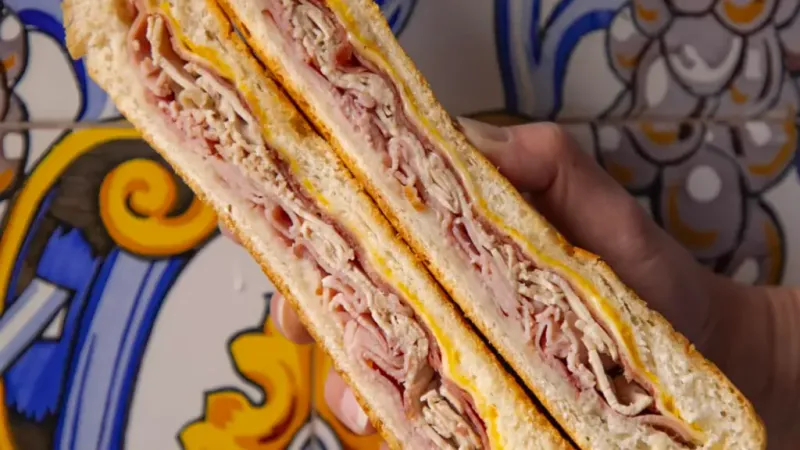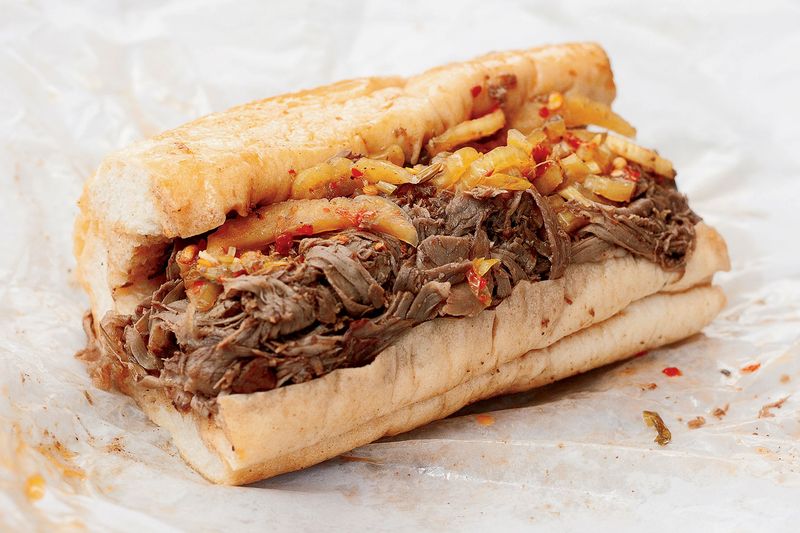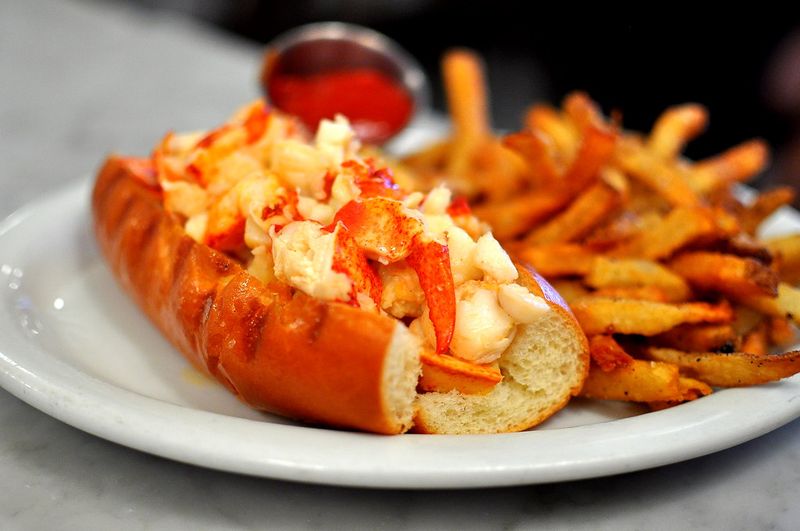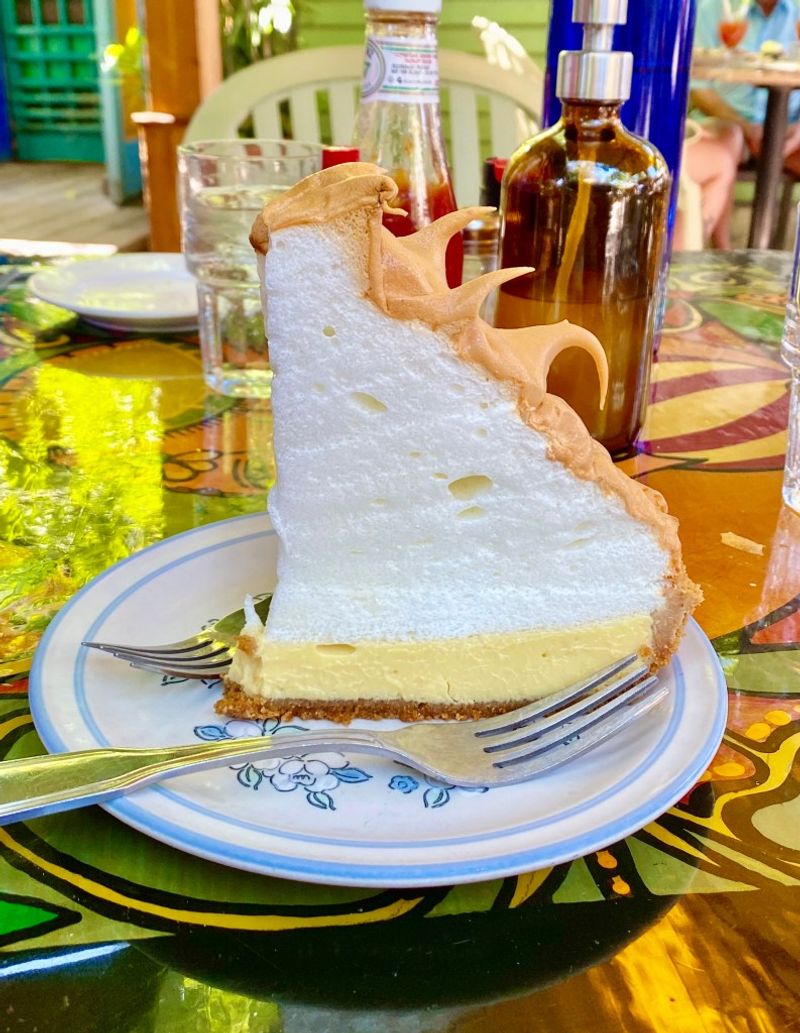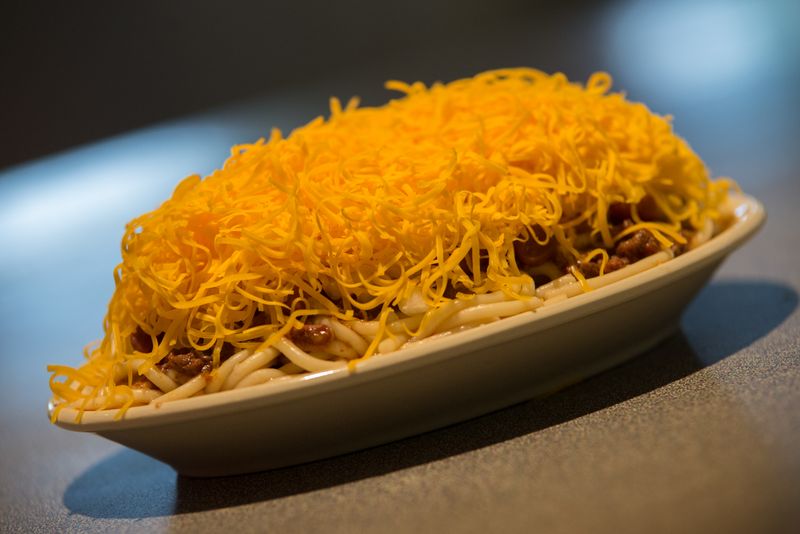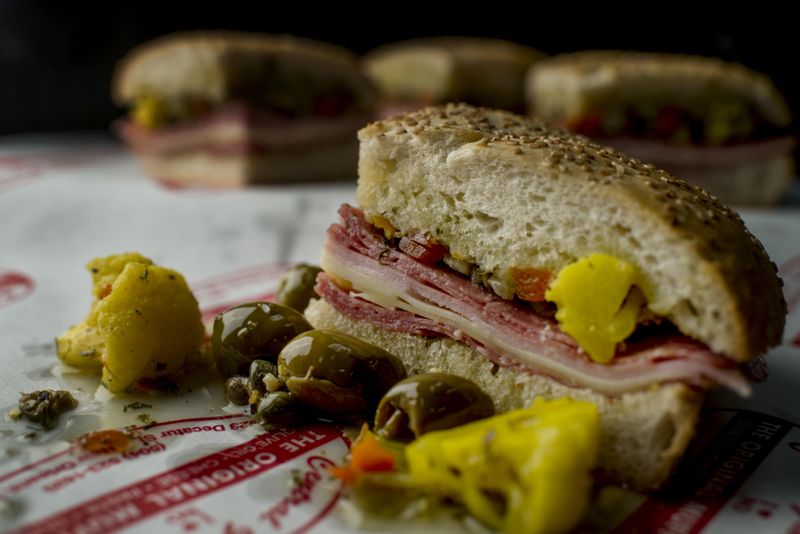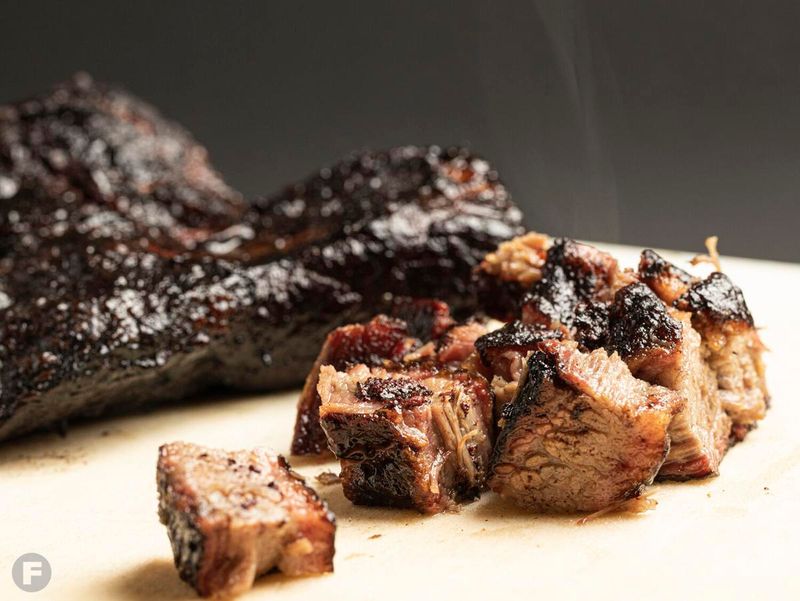America’s food story is written in sauce-stained menus and smoky kitchens from coast to coast. Every region has that one dish that locals swear by and visitors line up to taste. The best way to experience these iconic flavors is right where they started, at the restaurants that created them and kept the tradition alive for generations.
1. Buffalo wings at Anchor Bar (Buffalo, NY)
A late-night kitchen experiment in 1964 changed American bar food forever. Teressa Bellissimo tossed some chicken wings in hot sauce and butter, creating what would become one of the country’s most beloved appetizers.
Anchor Bar still operates on Main Street, serving wings the same way they did six decades ago. The recipe remains a closely guarded family secret. Visitors can sit in the same booths where the legend began and taste the original spicy, tangy coating that sparked a nationwide craze.
Locals will tell you that nowhere else gets the sauce quite right. The wings here have a perfect balance of heat and flavor that countless imitators have tried to copy.
2. Chicago deep-dish at Original Pizzeria Uno (Chicago, IL)
Ike Sewell opened his Ohio Street pizzeria in 1943 with a radical idea: what if pizza was more like a pie? He created a thick, buttery crust with tall edges that could hold pounds of cheese, toppings, and tomato sauce.
The result was something completely different from the thin Neapolitan pies people knew. Deep-dish became Chicago’s signature contribution to American pizza culture. Each slice is so filling that two pieces often make a complete meal.
The original location still bakes these towering pies in the same style. Expect a wait of about 45 minutes because authentic deep-dish can’t be rushed through the oven.
3. New Haven apizza at Frank Pepe Pizzeria Napoletana (New Haven, CT)
Frank Pepe brought his coal oven to Wooster Street in 1925 and started a pizza revolution that locals still argue about today. His thin-crust pies get blistered and charred in brick ovens that reach scorching temperatures.
New Haven residents call it “apizza” (pronounced ah-BEETS), and they’re fiercely loyal to their favorite spots. Pepe’s white clam pizza became legendary, topped with fresh littleneck clams, garlic, olive oil, and oregano but no tomato sauce.
The coal-fired method creates a crispy crust with a chewy interior that you won’t find anywhere else. Lines stretch down the block on weekends, but regulars insist it’s absolutely worth the wait.
4. Philly cheesesteak at Pat’s King of Steaks (Philadelphia, PA)
Pat Olivieri was a hot dog vendor in 1930 when he decided to grill some beef and put it on a roll. A cab driver smelled it, wanted to try it, and declared Pat should forget the hot dogs.
The family stand at 9th and Passyunk has been slinging cheesesteaks 24 hours a day ever since. They’ve served everyone from curious tourists to presidents craving that perfect combination of ribeye, onions, and melted cheese.
Order like a local by knowing your cheese choice: Whiz, American, or provolone. The debate with rival Geno’s across the street adds extra flavor to the neighborhood’s culinary legacy.
5. The Hot Brown at The Brown Hotel (Louisville, KY)
Chef Fred Schmidt faced a problem in the 1920s: hotel guests were tired of the same late-night supper options after dancing. He invented an open-faced turkey sandwich smothered in Mornay sauce and topped with bacon and tomatoes.
The Hot Brown became an instant hit at The Brown Hotel’s restaurant. Nearly a century later, the recipe hasn’t changed, and the dish remains the hotel’s signature menu item. Rich, savory, and impossibly indulgent, it’s comfort food elevated to fine dining status.
You can still order it in the hotel’s elegant dining room where it was first served. One Hot Brown is easily enough for two people to share.
6. Nashville hot chicken at Prince’s Hot Chicken (Nashville, TN)
Legend says Thornton Prince’s girlfriend tried to punish him for staying out late by making his chicken unbearably spicy. The plan backfired when he loved it and opened a restaurant to share it with the world.
Prince’s Hot Chicken keeps that fiery tradition alive across multiple Nashville locations. Andre Prince Jeffries, a family descendant, maintains the secret spice blend that turns ordinary fried chicken into a sweating, addictive experience.
Heat levels range from mild to extra hot, but even mild packs serious punch. Locals know to order extra white bread and pickles to cool down between bites of the cayenne-crusted chicken.
7. Beignets & café au lait at Café du Monde (New Orleans, LA)
Since 1862, the green-and-white awning of Café du Monde has sheltered visitors seeking the perfect New Orleans breakfast. The menu is famously simple: beignets, coffee, and a few beverages.
Those puffy squares of fried dough arrive hot and buried under a mountain of powdered sugar. Paired with chicory-laced café au lait, they create a combination that defines French Quarter mornings. The café operates 24 hours most days, making it equally popular for late-night cravings.
Fair warning: you will get powdered sugar everywhere, no matter how careful you are. Wear clothes you don’t mind dusting off and embrace the messy joy of this iconic treat.
8. New England clam chowder at Union Oyster House (Boston, MA)
America’s oldest continuously operating restaurant opened its doors in 1826 and has been ladling chowder ever since. Union Oyster House sits on the Freedom Trail, where Daniel Webster once drank brandy and ate oysters at the bar.
Their clam chowder is everything the New England style should be: thick, creamy, loaded with tender clams and potatoes. No tomatoes here—that’s Manhattan’s mistake. The recipe has stayed consistent through nearly two centuries of service.
Sitting in the worn wooden booths feels like stepping into maritime history. The chowder tastes the same as it did when sailors and patriots gathered here generations ago.
9. Detroit-style pizza at Buddy’s Pizza (Detroit, MI)
Gus Guerra borrowed some blue steel pans from a local auto factory in 1946 and started baking rectangular pizzas at his bar on Six Mile Road. Those industrial pans created something magical: crispy, caramelized cheese that ran to the edges.
Detroit-style pizza is baked twice, creating an airy interior and crunchy bottom. Toppings go on first, then cheese, and sauce gets ladled on top in racing stripes after baking. The original Buddy’s location still operates at that same corner, using the same techniques.
The edge pieces are the most coveted, where cheese meets pan and turns into crispy, salty perfection.
10. Pastrami on rye at Katz’s Delicatessen (New York, NY)
Katz’s has been curing, smoking, and hand-carving pastrami since 1888 in the heart of the Lower East Side. The neon sign, the ticket system, and the countermen yelling “Next!” are all part of the authentic New York experience.
Each sandwich contains nearly a pound of peppery, garlicky pastrami piled impossibly high on rye bread. The meat is so tender it practically melts, with the perfect ratio of lean to fat. A schmear of deli mustard is the only condiment you need.
That famous scene from “When Harry Met Sally” was filmed here for good reason. The sandwiches really are that good.
11. Cuban sandwich at Columbia Restaurant (Tampa, FL)
Florida’s oldest restaurant opened in 1905 in Tampa’s Ybor City, the cigar-rolling district built by Cuban and Spanish immigrants. Columbia helped establish the Tampa-style Cuban sandwich, which differs from Miami’s version by including Genoa salami.
The sandwich gets built on La Segunda bread, a local bakery treasure, then pressed until the Swiss cheese melts and the exterior turns golden and crispy. Layers of roast pork, ham, salami, pickles, and mustard create a perfect balance of flavors.
Columbia’s sprawling dining rooms span an entire city block now, decorated with hand-painted tiles. But the Cuban sandwich recipe remains unchanged from the original.
12. Italian beef at Al’s #1 Italian Beef (Chicago, IL)
Al Ferreri started selling Italian beef sandwiches from his Little Italy storefront in 1938, serving the working-class neighborhood lunch that Chicago adopted as its own. Thin-sliced roast beef gets piled onto Italian bread and dunked in meat gravy.
Ordering requires knowing the lingo: “dipped” means the whole sandwich goes in the gravy, “wet” is extra gravy, and “dry” keeps it minimal. Sweet peppers or spicy giardiniera add the finishing touch. The Taylor Street location still operates with the same no-frills approach.
Eating one is messy business, but that’s part of the charm. Napkins are plentiful and absolutely necessary.
13. Central Texas brisket at Kreuz Market (Lockhart, TX)
Kreuz Market has been smoking meat over post-oak since 1900, making it one of Texas’s oldest continuous barbecue operations. The Lockhart institution represents Central Texas style at its purest: no sauce, no forks, just meat, smoke, and time.
Their brisket develops a dark, peppery bark after hours in the pit while the interior stays tender and juicy with that prized pink smoke ring. It’s served on butcher paper with saltine crackers, pickles, onions, and cheese on the side.
The no-sauce philosophy lets you taste the quality of the meat and the skill of the pit master. Lines form early because once the meat sells out, they’re done for the day.
14. Lobster roll at Neptune Oyster (Boston, MA)
While Connecticut claims the hot buttered lobster roll’s invention, Boston’s Neptune Oyster perfected it and made it accessible to devotees every day of the week. This tiny North End spot barely has room for its 40 seats, but the lobster rolls draw crowds anyway.
The warm version features sweet lobster meat tossed in drawn butter and piled into a toasted split-top bun. Every bite delivers pure, unadulterated lobster flavor without heavy mayo or filler. You can also order it cold with a light mayo dressing if you prefer.
Expect a wait, especially during summer, but the staff moves efficiently. One roll might not be enough.
15. Key lime pie at Blue Heaven (Key West, FL)
Blue Heaven occupies a quirky Bahama Village spot that once hosted boxing matches, cockfights, and Hemingway’s boozy afternoons. Now it’s famous for towering slices of authentic Key lime pie that capture the island’s tart-sweet essence.
Real Key lime pie uses tiny, yellow Key limes that grow in Florida, creating a filling that’s more yellow than green. Blue Heaven’s version comes with a mile-high meringue topping that’s lightly torched. The graham cracker crust provides the perfect buttery base.
Chickens and roosters wander freely through the outdoor dining area, adding to the restaurant’s eccentric charm. It’s peak Key West: delicious, weird, and completely unforgettable.
16. Cincinnati chili at Camp Washington Chili (Cincinnati, OH)
Cincinnati chili confuses outsiders and delights locals with its unique Mediterranean-spiced meat sauce served over spaghetti. Camp Washington Chili has been serving this regional specialty since 1940 in a classic Art Deco diner that operates nearly 24 hours during weekdays.
Order it by the number: three-way adds cheese, four-way adds onions, and five-way adds beans. The chili itself contains cinnamon, chocolate, and allspice, creating a sweet-savory flavor that’s nothing like Texas chili. Oyster crackers and hot sauce sit on every table.
First-timers often look skeptical, but one bite usually converts them. It’s comfort food that could only come from the Queen City.
17. Muffuletta at Central Grocery & Deli (New Orleans, LA)
Sicilian immigrants at the French Market needed lunch, so Central Grocery invented the muffuletta around 1906. This massive round sandwich layers ham, salami, mortadella, mozzarella, and provolone on sesame-studded bread, all held together by tangy olive salad.
The olive salad is the secret: a marinated mix of olives, cauliflower, carrots, celery, and peppers that soaks into the bread. Central Grocery closed after Hurricane Ida but reopened in December 2024, bringing this iconic sandwich back home.
A whole muffuletta easily feeds four people. Order a quarter unless you’re incredibly hungry or sharing with friends.
18. Garbage Plate at Nick Tahou Hots (Rochester, NY)
Nick Tahou trademarked the name “Garbage Plate” in 1992, but he’d been serving this glorious mess since 1918. College students stumbling out of bars would ask for “a plate with all the garbage on it,” and a Rochester institution was born.
The plate starts with a base of home fries and macaroni salad, then adds your choice of burgers, hot dogs, or other proteins. Everything gets topped with meat hot sauce, onions, and mustard. It’s chaotic, filling, and strangely delicious.
This is hangover food, celebration food, and late-night fuel all rolled into one. Approach it hungry and without judgment.
19. French dip at Philippe the Original (Los Angeles, CA)
Philippe Mathieu claimed he accidentally dropped a French roll into a roasting pan full of juice in 1918, and the customer loved it so much that the French dip sandwich was born. Philippe the Original has been serving them ever since from the same downtown LA location.
The sandwich is simple: thinly sliced roast beef on a crusty French roll that’s been dipped in au jus. Some customers order it “double-dipped” for extra juice. Pickled eggs, coleslaw, and spicy mustard complete the old-school experience.
The sawdust floors and long communal tables preserve the restaurant’s century-old atmosphere. It opens every day at 6 AM.
20. Burnt ends at Arthur Bryant’s Barbeque (Kansas City, MO)
Arthur Bryant took over his brother’s barbecue joint in 1946 and turned burnt ends from trash into treasure. These caramelized, crusty pieces from the brisket point used to be pit master snacks until Bryant started selling them.
The burnt ends at Arthur Bryant’s are smoky, sticky, and intensely flavorful, with a bark that’s almost crunchy. They get tossed in sauce and served by the pound. Presidents, celebrities, and locals have all made pilgrimages here for these coveted scraps.
They’re only available when the brisket runs out of point meat, so calling ahead is smart. Once you try real burnt ends, everything else feels like a compromise.

